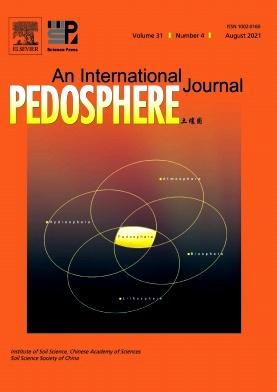基于超声搅拌的土壤团聚体稳定性评价:60年后(1964-2023)的局限性和建议
IF 7.3
2区 农林科学
Q1 SOIL SCIENCE
引用次数: 0
摘要
土壤团聚体稳定性是评价土壤结构的基本指标。虽然存在许多测试来评估土壤团聚体的稳定性,但超声搅拌(UA)因其有效性而得到广泛认可。然而,UA的一个重要限制是缺乏标准化的方法和稳定性评估标准,导致研究之间的不一致和不可比较。有几个关键因素影响土壤团聚体稳定性的评估,包括样品制备(例如,干燥、筛分和沉降时间)、初始和最终团聚体尺寸等级、最终能量形式的定义及其计算、仪器和实验室程序的变化以及标准化标准的缺乏。与一些稳定性方法不同,UA产生的结果范围很广,由于不同的程序设置,不同土壤和团聚体类型的分散能量差异很大(0.5-13 440 J g-1)。这些设置包括初始功率和振幅、温度波动、土壤/水比、探头规格(直径和插入深度)以及过程中使用的液体选择等因素。此外,UA面临着与有限的可重复性相关的挑战,这引起了人们对其作为标准稳定性评估方法的地位的质疑。为了解决这些问题,通过预定义的程序和稳定性标准进行标准化有可能将UA转变为一种精确且广泛接受的土壤稳定性定性和定量评估方法。在这篇综合综述中,我们概述了标准化UA面临的挑战,阐明了导致分散能量变化的因素,并提出了在土壤团聚体稳定性评估中建立标准化UA协议的实用建议。本文章由计算机程序翻译,如有差异,请以英文原文为准。
Soil aggregate stability assessment based on ultrasonic agitation: Limitations and recommendations after sixty years (1964–2023)
Soil aggregate stability is a fundamental measure for evaluating soil structure. While numerous tests exist for assessing soil aggregate stability, ultrasonic agitation (UA) is widely recognized for its effectiveness. Nonetheless, a significant limitation of UA is the lack of standardized methodologies and stability assessment criteria, resulting in inconsistency and incomparability across studies. Several critical factors influence the assessment of soil aggregate stability, including sample preparation (e.g., drying, sieving, and settling duration), initial and final aggregate size classes, the definition of final energy form and its calculation, variations in instrumentation and laboratory procedures, and the absence of standardized criteria. Unlike some stability methods, UA produces a broad range of results, with dispersion energy varying significantly (0.5–13 440 J g-1) across different soil and aggregate types due to divergent procedural settings. These settings encompass factors such as initial power and amplitude, temperature fluctuation, soil/water ratio, probe specification (diameter and insertion depth), and the choice of liquid used during the process. Furthermore, UA faces challenges related to limited reproducibility, raising doubts about its status as a standard stability assessment method. To address these issues, standardization through predefined procedures and stability criteria has the potential to transform UA into a precise and widely accepted method for both qualitative and quantitative assessments of soil stability. In this comprehensive review, we outline the challenges in standardizing UA, elucidate the factors contributing to dispersion energy variation, and offer practical recommendations to establish standardized protocols for UA in soil aggregate stability assessments.
求助全文
通过发布文献求助,成功后即可免费获取论文全文。
去求助
来源期刊

Pedosphere
环境科学-土壤科学
CiteScore
11.70
自引率
1.80%
发文量
147
审稿时长
5.0 months
期刊介绍:
PEDOSPHERE—a peer-reviewed international journal published bimonthly in English—welcomes submissions from scientists around the world under a broad scope of topics relevant to timely, high quality original research findings, especially up-to-date achievements and advances in the entire field of soil science studies dealing with environmental science, ecology, agriculture, bioscience, geoscience, forestry, etc. It publishes mainly original research articles as well as some reviews, mini reviews, short communications and special issues.
 求助内容:
求助内容: 应助结果提醒方式:
应助结果提醒方式:


